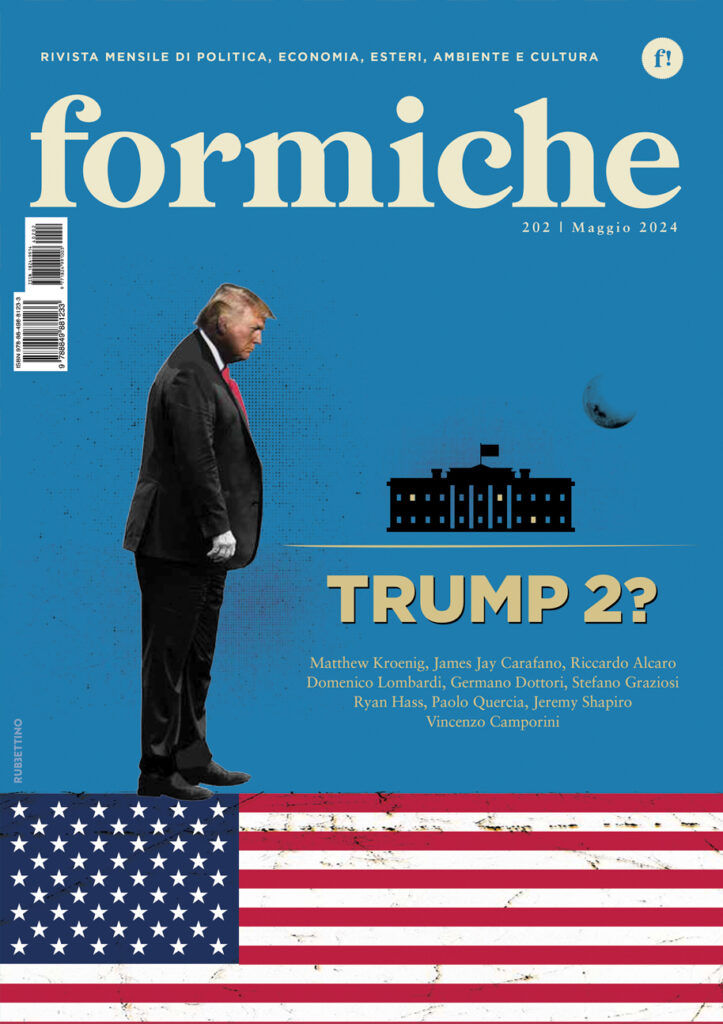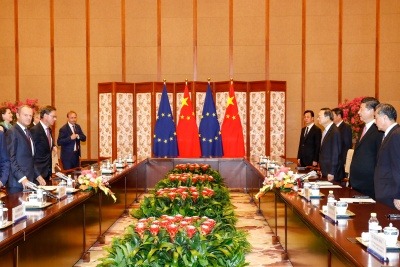Circular Economy is recognised in China and Europe as an important driver accelerating the transition to a knowledge-based economy and sustaining societal innovation.
The global economy uses the equivalent of one and a half planets’ worth of resources to produce global output and absorb waste. Estimates put this figure at two planets’ worth of resources by the 2030s. Europe is more dependent on imported resources than any other region in the world and many resources will be exhausted in the relatively short term. The same is true for China, with some relevant exceptions among rare earths and critical metals. Environmental crises threaten the stability of our societies. There is some good news in that today high-paced technology developments, such as the so called “Industry 4.0”, provide viable enablers for the energy transition and the transition towards a circular economy. We are on the verge of a new Industrial Revolution. This transformation will be painful, it will hit stranded assets and investments but, at the same time, it offers unimaginable economic opportunities for innovative businesses and states.
Policy discourse and recent legislation (2015-2017) in both regions are converging to challenge the traditional model of linear economy (take, make, dispose). The Memorandum of Understanding (MoU) on Circular Economy Cooperation signed at the 20th EU-China Summit (July 2018) is a step forward. The transition to CE in the worlds’ two largest economies would accelerate a global “system shift” towards a low carbon regenerative economy.
A PARADIGM SHIFT
Linear economy – based on a take, make, and dispose approach has dominated both the economic development and growth narrative since the beginning of the Third Industrial Revolution.
It’s only in recent years that a fundamental paradigm shift, from the traditional linear to a circular economic model, has become a realistic alternative for politicians and industries. This is due to technological advances that make the transition not only possible, but economically viable. In 2015, a joint study of the Ellen MacArthur Foundation and MacKinsey provided evidence that a CE, “enabled by the technology revolution, would allow Europe to grow resource productivity by up to 3 percent annually. In so doing generating a primary-resource benefit of as much as €0.6 trillion per year by 2030 to Europe’s economies. In addition, it would generate €1.2 trillion in non-resource and externality benefits, bringing the annual total benefits to around €1.8 trillion compared with today. This would translate into a GDP increase of as much as seven percentage points relative to the current development scenario, with an additional positive impact on employment”.
TOWARDS A MORE SUSTAINABLE ECONOMY?
Ten years after the financial crisis, CE is recognised in Europe and China as the pathway to create a sustainable economy, guarantee prosperity and employment whilst achieving resilience and contributing to the construction of an environmentally friendly society.
As global frontrunners in the field of circular economy, the EU and China lead on designing and implementing policies and rules, on public and private investments, green innovation and public awareness. In the three-year period 2015-2018, comprehensive policy frameworks for CE have been developed in both regions. Certainly, a step in the right direction. However, to turn CE visions into industrial realities, further actions are urgently needed.
Implementation has, in fact, remained piecemeal. Virtuous examples of industrial symbiosis pilots have not been scaled-up. Enabling technologies are nowadays mature and robust enough to support the application of CE principles, effectively and cost-efficiently, across industry sectors.
The establishment of an EU-CHINA Circular Economy Platform and short-term Action Plan would accelerate the transition, strengthen multilateralism, reaffirm a rule-based international order and help tackle the negative effects of globalisation and further economic integration.
The vision of a resource efficient, sustainable economy is now widely understood as an economic system that operates within the planetary boundaries (Rockström et al., 2009). This shift in the economic narrative is also a consequence of the growing awareness of environmental threats and the engagement of public opinion world-wide. Today, more people are ready to accept changes in their lifestyles in order to tackle climate change and the environmental crisis.
CHANGING SOCIETIES
A low-carbon circular economy and the development of a just, resource-saving society represents the “infrastructure” needed to address global and regional key challenges, ensuring a sustainable future for all by building competitive, knowledge-based, innovative economies. Norms, financial mechanisms, technology innovation and public participation are identified as the building blocks of a comprehensive circular economy.
In this sense, some analysts envisage that AI based solutions will shift the boundaries of individual decision making and the organisation of human societies as a whole. As individuals are simultaneously receivers and producers of data, their interactions can result in the creation of innovative “bottom up” approaches, able to trigger, together with government led actions, quantitative and qualitative transformation across industry sectors. The sharing economy, for instance, is largely presented in literature as promoting access-based business and consumption models, that should help reducing carbon footprints and a more efficient use of resources.
These trends can effectively help address the challenge of CE implementation and accelerate the economy wide transformation process towards sustainability.
The EU, China and the rest of the world are interrelated. The creation of an international policy framework for circular economy is needed. Provided local actor constellations are taken into account, such framework must include, at the very least: a common system of economic incentives and side policies for resource efficiency and shared models for industry standards and approvable processes. The EU Industrial Emission Directive (IED) and the Best Available Techniques Reference Documents (BREFs) can offer an effective operating model that can be extended to EU-China trade.
Faced with such common challenges, Europe and China present significant differences in their political and social dimension, institutional make-up and models of governance. We argue that these differences must not be considered as an obstacle to constructive dialogues. On the contrary, we can learn from each other experiences. Transfer of knowledge, technologies, best practises is seminal to building an innovative circular economy system across the Eurasian landmass. Reciprocity and level playing field will be ensured by the shared set of rules for trading and engaging.
EU-CHINA CIRCULAR ECONOMY PLATFORM
In the framework of the EU-China Summit Joint statement (Brussels, 9 April 2019) the EU-CHINA Circular Economy platform could be seen as the most effective pathway to jointly identify, develop and test:
- Best Available Techniques (BAT) options and Technology Scenarios, while promoting Innovation Partnerships, Joint Technology Initiatives and tackling barriers to eco-innovation;
- Clear price signals and fiscal measures to steer production and consumption processes (tax carbon!)
- Strategies and measures to promote, initiate and sustain CE virtuous processes and CE based product creation in each parties’ domestic markets;
- Measures which promote, strengthen and sustain reprocessing and remanufacturing within an agreed framework;
- Financial mechanisms to support the scale-up of circular economy processes and business models on national and international markets;
- CE international standards to classify and trade, in international markets, waste by-products and secondary raw materials with a view at reuse and recycling;
- Informal mechanisms for information and consumer protection, including tools for public participation.
Further cooperation with developing countries targeted at building an institutional and industrial framework for CE, as well as at promoting local by-product compliance with international standards. As an example, the extension of eco-design principles to include energy-related products etc.
Despite Europe and China having significant differences in their political and social construction, institutional make-up and models of governance, these differences must not be considered as an obstacle to constructive dialogues to address the common challenges. On the contrary, we can learn from each other’s experiences. Transfer of knowledge, technologies and best practices is seminal to building an innovative circular economy system across the Eurasian landmass. Reciprocity and a level playing field will be ensured by the shared set of rules for trading and engagement.
GLOBAL ECOPOLITICS
Constructed in this way, the EU-CHINA Circular Economy Platform will have the potential to become an engine to shift production and consumption patterns towards a low carbon and a resource efficient economy, with a radical change in business models and international trade. We dare to argue, that only together Europe and China can be successful, not in spite, but because of the global nature of the challenges ahead.
Europe and China can nowadays assert true vision and overcome resistance to change. Only together, can Europe and China embrace openness and cooperation for mutual benefit, taking the lead in global ecopolitics, , in the hope that the United States will soon reassert their leadership positions in the environmental crises.
It’s time to gather and it’s time to change. Above all, it is time to shape together a new age of human development, hoping that others will follow and join forces with us, as we remember that “where there is no vision, the people perish” (proverbs 29:18).
In China, the industrial sector is responsible for around 70 per cent of the country’s energy consumption and 72 per cent of its carbon emissions (Lu & Price, 2012; National Bureau of Statistics, 2013). The industrial sector is therefore of central importance if China is to achieve its carbon emission intensity targets.
Europe, under the frameworks of the “Roadmap to a Resource Efficient Europe” and the “European Circular Economy Action Plan”, is converging with the ongoing processes within China. European industrial sectors can demonstrate leadership and join with Chinese partners to design and build the new production processes and consumption models required by a low carbon and resource efficient economy. This is the big gamble of the EU-China platform. Germany has the ability and responsibility to drive Europe along this path.








